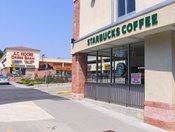Starbucks: From Disruptor to Commodity
�
�
Table of Contents
4Executive Summary �
6Background �
10Innovations �
11Global Expansion �
12Competitors �
13Business Decisions �
14Disruptive Innovation �
15Current Market Position �
16Customers �
17Products and Pricing �
17Current Growth �
17Distribution Channels �
18SWOT Analysis �
18Strengths �
19Weaknesses �
19Opportunities �
20Threats �
20Financial Performance Analysis �
23Recommendations and Action Plan �
24The Third Place -Focus on Core Competency �
25Community Reach out - Different Spin on Marketing �
26Re-branding: Working class Cup (The In-House 1$ cup) �
27Appendix �
32References �
��
Executive Summary
Starbucks became very successful because it was a disruptive innovation to the market. It is selling more than coffee; it is selling the third place between home and work. Starbucks is a place to sit down and have a conversation or have an informal meeting with a rich tasting high quality coffee in a unique environment.
It attracts students, office employees, and people who simply like to sit down to drink a cup of coffee.
Since going public in 1992, Starbucks US and international stores rapidly grew from an incredible total of 165 to 16,548 stores. These stores are company operated and licensed stores. In 2003, Starbucks decided to franchise to expand more quickly with the help of investors. Starbucks closed franchising the same year because by owning and running the stores themselves, they can control the quality directly. Even without franchising, Howard Schultz admits his disruptive innovation has become a commodity due to the quick store growth and has opened a door for poor quality of service.
In recent years, Starbucks has lost US market share to its competitors such as Dunkin Donuts and McDonalds due to several factors. The rise in gas prices and a slowdown in the economy have...


